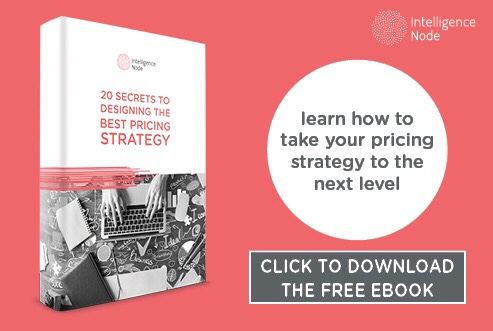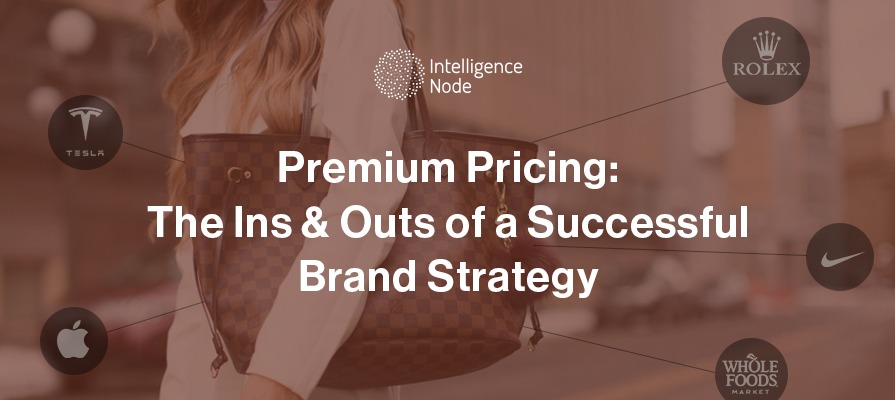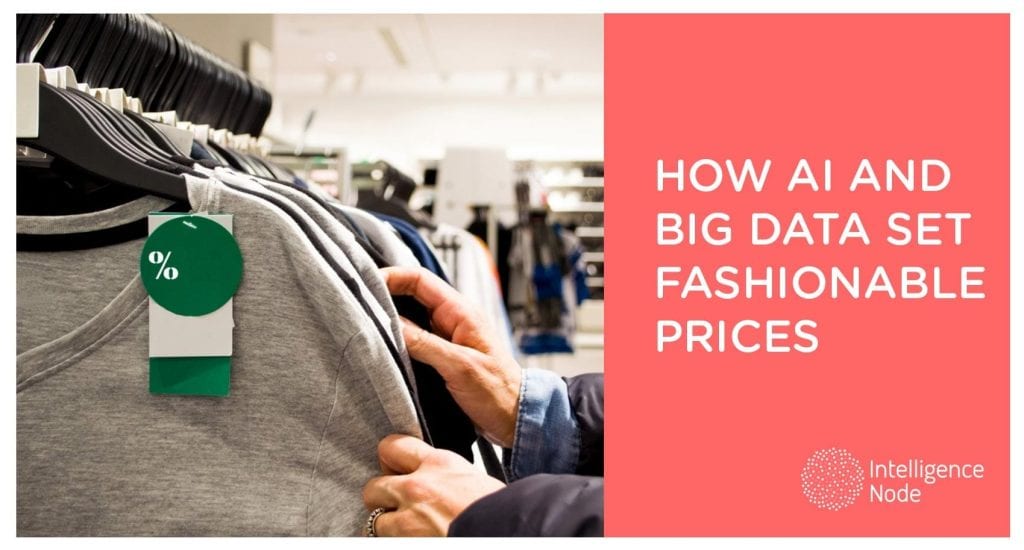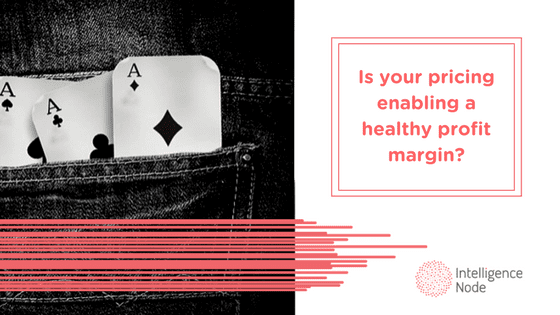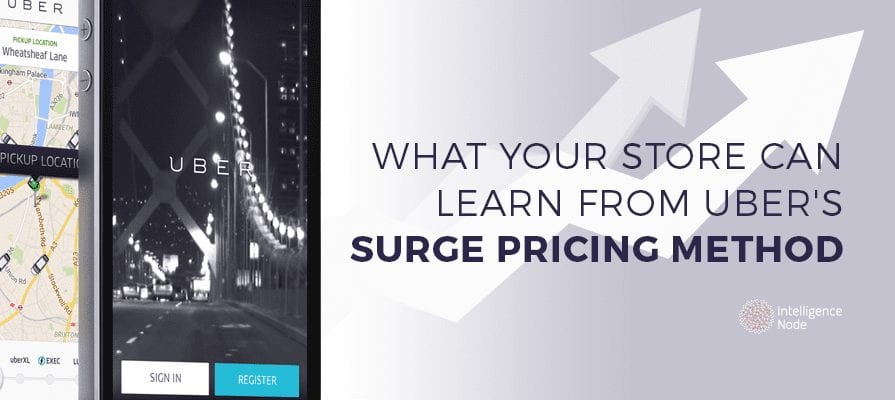How High-End Brands Maximize Their ROI
Premium pricing is one of the most lucrative market strategies available… But naturally, it’s not for everyone. Here, we explore which brands can go premium, what they stand to gain and lose, and why price alone isn’t everything.
Table of Contents
Premium pricing: A game of perception
First, tap into prestige or scarcity
The advantages run deep
Obstacles to the advantages
It’s not all about price
Premium pricing is an ongoing strategy
That’s exactly the idea behind Premium pricing. For some brands, higher price tags work to solidify product value and deliver greater margins. Essentially, the key here is perception: Customer impression of a brand or product can itself be a driving market factor. If people believe your offering is truly worth more money, they’ll be willing to pay more money — plain and simple.
But, of course, this can’t be a universal strategy. On the contrary, it’s a framework that only works for a select minority. And as for the brands that belong to this select minority, they share a handful of unique factors:
Premium Pricing strategy relies on some level of prestige or scarcity
In other words, there has to be something that makes the price worth it. The most common examples include:
- Quality. Here, you get what you pay for: Superior materials, expert engineering, ethical production, and the like. Many people are happy to pay extra for Whole Foods’ higher-standard groceries. And they’re just as happy buying Rolex watches that never need maintenance. The added benefits behind these products are worth the additional cost.
- Luxury. This one’s a little more about status and aesthetic. You see it with anyone buying Porsches and Lamborghinis. And it’s the reason someone might drop more money for Nike-branded apparel than for generic sportswear. The brand carries a desirable symbol — one that the buyer pays for the privilege of wearing and identifying with.
- Uniqueness. Sometimes, it’s worth paying a premium because there simply aren’t many alternatives; perhaps one company has cornered a valuable niche. A recent example of this was when Tesla came out with electric vehicles. Especially early on when the competition was minimal, eager buyers were dropping six figures to get these unique models.
- Exclusivity. The slight difference from uniqueness here is that exclusivity is more innate to the product (not the brand). For instance, part of what drives the prices of high-end jewelry is the sense that you’re receiving a rare, treasured specimen. Even though they’ve been around forever, precious gems and shiny metals never lose the luster of exclusivity and stature.
And, naturally, these factors often overlap and combine for various brands. To some extent, Porches and other luxury cars fall into all four categories — as do Rolex watches.
Now that we have the basis for a premium brand, let’s examine the pros and cons:
For brands that enjoy these factors, there are several premium pricing advantages
To start, premium pricing carries prestige. This carries into brand perception and reputation, bleeding into a company’s entire operational process — both internal and customer-facing. And yes, there’s a bit of circular logic here: Prestige products breed premium pricing… And these premium prices reinforce the notion that the products hold prestige.
But what good is prestige if it doesn’t tangibly translate? Yes, increased profit margins are a primary benefit of successful premium pricing. Quality, luxury, uniqueness, and exclusivity are all more costly to obtain and produce, but premium prices can offset those costs in a more lucrative way than standard pricing ever could. As it stands, the most effective premium brands enjoy a higher ROI per individual item or service purchased.
… Which goes hand in hand with another perk: higher ROI per individual customer. To premium brands, the quantity of sales isn’t quite as important as the devotion of a particular audience. This audience has a higher willingness to pay and more overall brand loyalty (than for your average non-premium brand).
And that means your marketing team can target their messaging much more precisely. Their goal doesn’t have to be to appeal to the masses; they just have to build deep relationships with their smaller, established tribe.
This also means these brands are relatively tough to compete with. Unlike discount brands, premium companies aren’t quite as vulnerable to price wars or other undercutting practices. No, their high prices are badges of honor that add to their identity.
But to enjoy premium pricing advantages, you first need a strong brand infrastructure
Back to that self-fulfilling circle of brand prestige and premium pricing: That perception of prestige cannot waver. If it does for whatever reason, this entire circle can get thrown into jeopardy. That’s why these brands need strong, unshakeable value propositions. In an ideal world, their names, slogans, logos become synonymous with some degree of prestige (Any of the previous premium pricing examples apply here, as does Apple: Just think how all their popular devices — iPhones, iPads, watches, Macs — contribute to this high-end perception).
Here’s the thing about premium value perceptions, though: They need to be cultivated from the get-go. Meaning that these brands often need to invest more time and money into the initial stages of product design and production. Rarely do premium-priced products succeed without delivering the desired bonuses; they still need to walk the walk. And it’s not just a matter of product development; this perception also requires more effortful brand building and marketing to get the ball rolling.
Once that ball is rolling, another slight issue presents itself — that of a limited audience. The higher your prices go, the more people you price out of your prospective customer base. This presents the delicate task of finding a proverbial pricing sweet spot: Go too high, and you may lose a valuable sector of buyers, leaving you with an unsustainable amount of demand. Go too low and you might undermine your desired brand perception (as well as item-by-item profits).
An interesting example of this balancing act is Trader Joe’s, which manages to combine high-quality products with relatively reasonable pricing. Together, they foster an unmatched brand strength — one that produces exceptionally high demand that makes up for their non-premium pricing.
Trader Joe’s success highlights another challenge faced by premium brands: What if a suitable alternative comes along at a slightly lower cost? A top-shelf grocery store would certainly find itself in a precarious spot if a Trader Joe’s opens up down the block.
All in all, a lot has to go right for a brand to win with premium pricing — and it has to stay right.
Looking beyond the numbers: What else goes into premium pricing strategy?
So let’s say it does go right. You have this high-end product or service, backed by quality manufacturing or infrastructure, with a price that reflects this value.
The premium journey is not yet over. Beyond price, other business considerations need to be taken into account. For instance:
- Reliability. For most premium brands, this is a cornerstone characteristic — one that often manifests in the form of customer service. Expectations are that this service will go above and beyond, from the first moment a prospect considers buying to many years down the road. And while the product itself is expected to be reliable, in the off chance that something goes haywire, a clean, reassuring band-aid has to be there to stop the bleeding asap.
- Appearance. As mentioned with the example of Apple, premium pricing strategy tends to harp on presentation and surrounding aesthetics. When you pay a premium, you’re not just buying the product; you’re buying the packaging, the explainer handbook, and all the extra little appliances. All of these play into the premium vibe, as do the traditional marketing elements: Design, copy, and the overall user interface.
- Atmosphere. Similar to appearance, but more specific to the in-store experience. Apple is almost too obvious to list, but other exemplar premium pricing examples here include Tiffany & Co, Made.com, and Virgin Airlines. These brands have incorporated interactive in-person activities, real-time product testing, and exciting tech innovations (i.e. virtual reality, in-store tablets) into their experiences. Together, they create in-store atmospheres that are perfect representations of what they value and want to evoke.
These three bullet points are essential, but they’re still just the tip of the premium pricing iceberg. But they still work to demonstrate that this iceberg has plenty below the surface of mere price-setting. All of which brings us to our final point:
For a premium pricing strategy to work, it needs to continuously be reinforced.
This includes vigilant analysis of data — regarding market conditions, competitor movements, consumer sentiment, and more. The brands mentioned above aren’t just successful because they’ve hit gold in their products; their success is largely a product of deeply understanding how their product is perceived in the market.
In today’s age of commerce, this perception can fluctuate at the drop of a hat. Meaning that pricing decisions and surrounding operations have to be reevaluated on a minute-to-minute basis. And it’s this very idea that lies at the heart of our mission here at Intelligence Node to help brands optimize their prices for the modern marketplace.
For more data-driven insights, take a look at our 20 Secrets to Designing the Best Pricing Strategy — useful for premium brands, discount retailers, and everyone in between:
